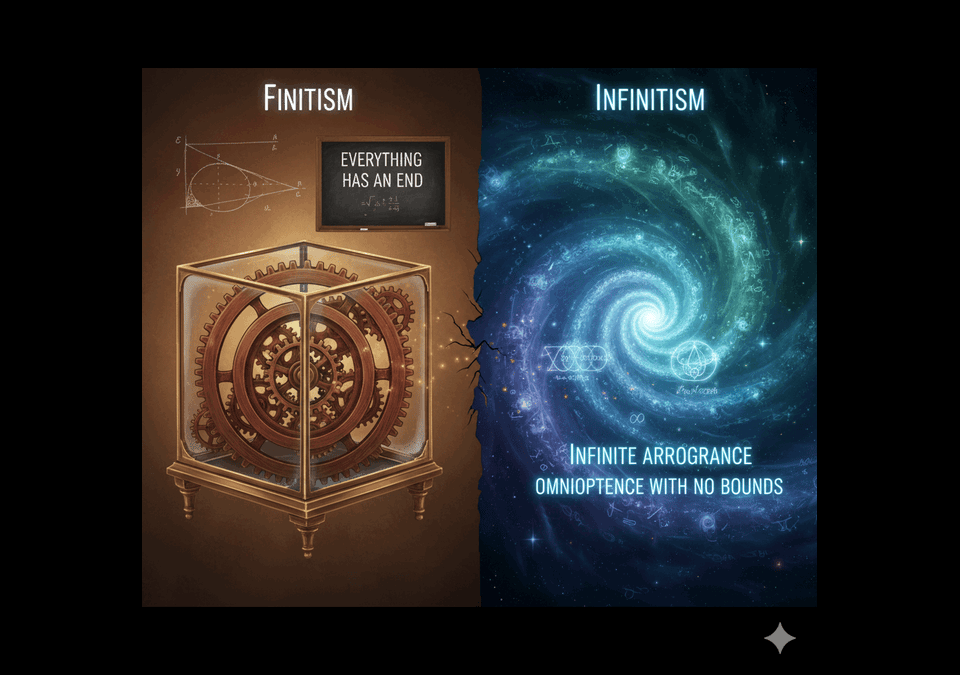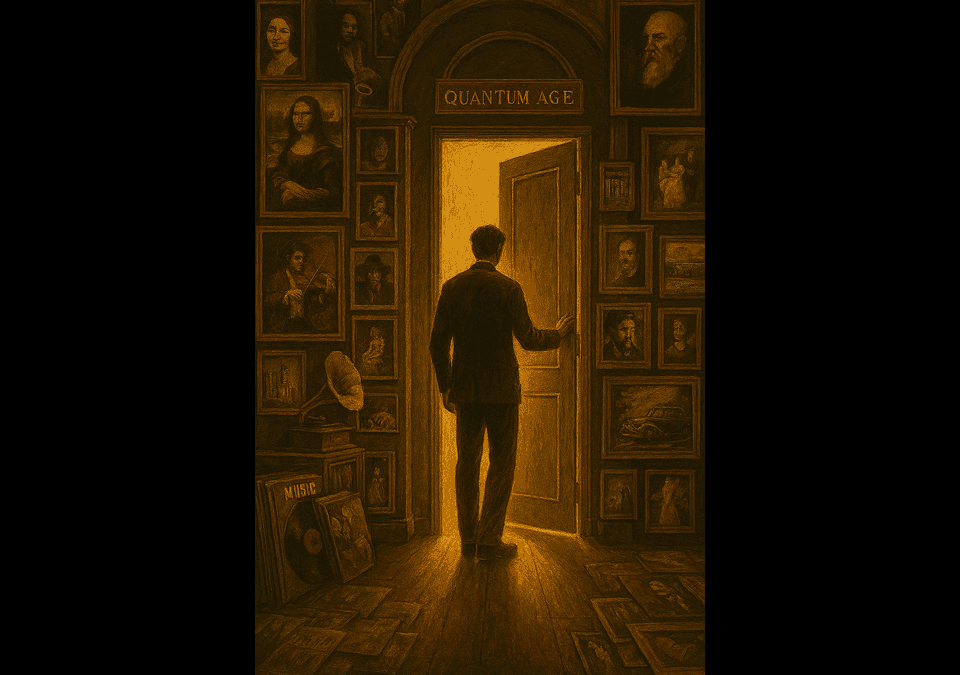
Lava-Void Cosmology: New Theory Of Dark Energy
September 30, 2025
Turn your IPHONE into SONY A7 IV
October 1, 2025The tragic, yet unforgettable, Gentry Xavier and his legacy endure as that of a thinker who dared to say aloud what others only whispered: that gravity itself may be the voice of the multiverse calling us home. Long before his untimely death at the United Nations, Gentry stepped into a confessional booth at St. Patrick’s Cathedral in New York City. Gentry sat down in the dark booth, and a screen or laced opening that separates the penitent from the priest slides open.
The priest said, “In the name of the Father, and Son, and the Holy Spirit. Amen”
Gentry: “Father, I have something to tell you.”
Upon hearing his voice, the priest asked, “Are you that guy they call Gen-X?”
Gentry: “Yes, Father and I have something to tell you.”
The Priest: “Go on, my son.”
Gentry: “In recent years, Simulation Theory has moved from the realm of science fiction into serious philosophical and scientific debate. Figures such as Nick Bostrom, Elon Musk, and other thinkers have publicly explored the possibility that our universe may not be “base reality” but rather a highly advanced simulation. While this may appear to be a cutting-edge idea born of modern computing and artificial intelligence, the essential premise that the world we inhabit is not the ultimate reality has been voiced for millennia.
From Plato’s allegory of the cave to the radical dualism of Gnostic texts, the suspicion that human life unfolds within an illusory framework has deep historical roots. If contemporary inquiry lends credibility to Simulation Theory, then perhaps we should also re-examine the ancient corollary: that if the world is simulated, it may have been crafted by an imperfect or lower god, the Demiurge.
Plato’s Republic provides one of the earliest systematic articulations of the idea that the reality humans perceive is a distortion of a higher truth. In the allegory of the cave, human beings are likened to prisoners chained in a dark cavern, mistaking shadows cast upon the wall for reality itself. Only when freed from their bonds can they ascend into the light of the sun, a metaphor for the true realm of the Forms. Although not couched in digital terms, Plato’s cave functions much like a simulated environment: an illusory projection convincing enough to hold sway over the senses but fundamentally divorced from ultimate reality.
Plato’s insight is strikingly similar to Simulation Theory’s claim that our perceived universe may be a computational projection rather than a foundational existence. If we now entertain this possibility, Plato’s allegory may have been less a poetic metaphor and more a profound philosophical anticipation.
Where Plato suggested that human perception is distorted, Gnostic thinkers went further, proposing that the world itself is the product of a flawed creator. In Gnostic cosmology, the material universe was not fashioned by the supreme, transcendent God but by a lower, ignorant, or even malevolent being known as the Demiurge. This Demiurge, often identified with the Old Testament’s creator god, fashioned a cosmos designed to entrap human souls in matter, keeping them ignorant of their divine origin.
The parallels to Simulation Theory are uncanny. The Gnostics saw the Demiurge as a kind of cosmic jailer or programmer, designing a false world meant to keep souls distracted and blind to the higher reality beyond. Their sacred texts, like the Apocryphon of John and the Gospel of Thomas, urge seekers to awaken, recognize the artificiality of the world, and pursue gnosis, knowledge of the true divine realm beyond the material illusion. In essence, they offered an ancient version of “breaking the simulation.”
Today, physicists and computer scientists occasionally stumble upon what some describe as “glitches in the matrix” or unexplained regularities in physical constants, strange properties of quantum mechanics, or the possibility that the universe is pixelated at the Planck scale, like the resolution of a screen. These clues invite speculation that our reality may indeed be structured like code.
If these modern signs point toward the artificiality of the cosmos, it is worth asking whether we should also heed the warnings of those who identified this condition thousands of years ago. If Plato, the Gnostics, and other mystics were correct that the world is not what it seems, might they also be correct about the nature of its maker? That the architect of our simulation is not the highest principle of goodness and truth, but a subordinate, limited intelligence, what the Gnostics called the Demiurge?
Accepting Simulation Theory already challenges the foundations of materialist science, suggesting that physical reality is not primary. Extending this further to Gnostic cosmology suggests that the architect of this simulation may not be benevolent. How can it be God’s will to have such evil running unabated across his creation over time and space? The ancient call to seek liberation from the Demiurge becomes eerily relevant in the age of artificial intelligence and virtual reality.
Simulation Theory may seem like a product of contemporary science and technology, but its intellectual roots extend deep into human history. Plato, the Gnostics, and other ancient voices argued long ago that our world is not the ultimate reality but a kind of illusion, shaped by forces that may not have our best interests at heart.
If modern inquiry lends weight to their first claim, should we not also take seriously their second? Perhaps the ancients were not merely speculating but transmitting insights about the very structure of existence, that we inhabit a simulated cosmos, crafted not by the highest God, but by a Demiurge. In rediscovering Simulation Theory, we may be circling back to wisdom humanity has always known but often forgotten: that the world we see is not the world that truly is.
Think about it, for centuries, human beings have dismissed certain stories as myth, only to later discover they were grounded in historical truth. Legends once considered fanciful often conceal kernels of reality, sometimes entire civilizations buried beneath the earth. When we reflect on this, it raises a profound question: if ancient claims about hidden worlds, lost cities, and unseen powers have so often proven true, should we not also reconsider the ancient warnings that our entire reality is illusory, shaped by a lower god or cosmic artificer?
With Simulation Theory now taken seriously by philosophers and scientists, perhaps the Gnostic vision of the Demiurge deserves a second hearing. Let me give you some examples. For generations, the Iliad of Homer was treated as epic poetry, not history. Scholars assumed the Trojan War, Helen’s abduction, and Achilles’ rage belonged to the realm of myth, much like Hercules or the Minotaur.
Then, in the late nineteenth century, Heinrich Schliemann dug into the sands of Hisarlik in modern-day Turkey. To the astonishment of the scholarly world, he unearthed the remains of a great city that bore every hallmark of ancient Troy. Suddenly, what had been “just a story” was grounded in stone walls, charred ruins, and treasures of gold.
If the city were real, then how much else of Homer’s “myth” was also true? Was there indeed a war? Was there a Helen whose beauty launched a thousand ships? Once the line between myth and history blurs, the impossible becomes plausible. Troy teaches us that dismissing the ancients as mere fabulists may blind us to truths buried just out of sight.
Another good example of this kind of thing is that for many years, skeptics questioned whether the family of Jesus truly lived in a vibrant, real-world context, or whether the Gospel writers invented details to lend credibility to their story. Nazareth itself was doubted, but even more so was Sepphoris, a flourishing city in Galilee sometimes referred to as “the city of Mary.”
Ancient sources described Sepphoris as a hub of culture and administration in the region, but for centuries, no ruins were visible. Some critics suggested it was a legendary embellishment, a way of rooting Jesus’ story in a grander setting than a backwater village.
Then, in the 20th century, excavations unearthed the spectacular remains of Sepphoris: Roman-style villas, mosaic floors (including the famous “Mona Lisa of Galilee”), a theater, marketplaces, and aqueducts. What had been doubted as legend was revealed as one of the most advanced urban centers in Galilee during the exact period of Jesus’ youth.
Sepphoris lay only a short walk from Nazareth. It is not hard to imagine Joseph, a builder by trade, working on construction projects there, or Mary and her family traveling to the markets. This city, dismissed for centuries, emerged from the soil as proof that the Gospels reflected a lived and tangible geography.
Once again, what skeptics called “myth” was shown to be history. The rediscovery of Sepphoris strengthens the pattern: ancient texts preserve details moderns doubt, until archaeology vindicates them. Just as Troy rose from under the sands, and the Flood was traced in sediment, and Jericho was confirmed as real, so too Sepphoris proves that the ancients were often more accurate than modern skepticism allows.
And if we accept that they were right about the existence of places and events once called “legendary,” why should we not also grant them the possibility of being right about their deepest claims; that this world itself is illusory, shaped by a lower god? If Sepphoris can emerge from centuries of doubt as a city in stone, might the Demiurge one day emerge from centuries of dismissal as a reality in spirit?
The Bible describes Joshua and the Israelites bringing down the walls of Jericho. For centuries, skeptics regarded this as a legendary embellishment. Yet archaeologists uncovered ancient Jericho and evidence of collapsed walls dating back thousands of years. Debate continues about precise timelines, but what was once seen as wholly fictional has gained serious historical grounding.
I could go on and on with these examples. Plato’s Atlantis was long dismissed as an allegory. While Atlantis itself remains elusive, discoveries like Göbekli Tepe in Turkey, a 12,000-year-old temple complex far older than Stonehenge, prove that humanity’s ancient past is full of forgotten civilizations capable of astonishing feats. What was once thought “impossible” is now undeniable. If one “myth” of a lost advanced culture is partly true, how many more remain hidden under the earth or sea?
These examples force us to reconsider the relationship between myth and truth. Time and again, what was dismissed as fiction revealed itself as fact. The “mythical” repeatedly intrudes into the real. This pattern suggests that humanity’s oldest spiritual warnings should not be lightly dismissed. If Plato’s cave and the Gnostics’ Demiurge described a false reality that entraps human perception, perhaps they were pointing to something as real as Troy beneath the sands. If Simulation Theory today argues that our cosmos may be a projection, a vast computational illusion, then ancient myths may be vindicated once more.
The Gnostics believed our world was fashioned by a lower god, a Demiurge, who spun a flawed and binding reality to trap the soul. Their texts describe this cosmos as counterfeit, a shadow of a higher divine order. For centuries, this teaching was dismissed as esoteric fantasy. But now Simulation Theory raises the same possibility: that a being (or intelligence) designed this universe, and that its motives may not be aligned with our ultimate good.
If Troy, Sepphoris, and other “myths” have turned out to be true, why not this? If the ancients were right that the world is not the ultimate reality, perhaps they were also right that its architect is not the highest God. In that case, the search for truth and freedom becomes not merely philosophical but existential; the quest to escape the code of the Demiurge and awaken to the reality beyond.
History has shown us that myths often carry hidden truths waiting to be uncovered. What we once dismissed as legend can be revealed as reality when time, science, and archaeology catch up. Perhaps these warnings about illusion, false gods, and hidden realities also deserve reconsideration. Simulation Theory does not stand alone; it may be the latest rediscovery of a truth humanity has always half-known: that our world is not ultimate, that a lower architect shaped it, and that beyond its walls lies the true and eternal.”
The Priest listened to every word the Gentry had to say in silence, and when Gen-X was done, the confessional booth shook with the priest’s convulsions, his laughter booming against the wood like thunder in a cathedral. At first, the penitent Gentry sat frozen in silence. A parishioner lighting candles in the nave cocked her head at the sound, whispering to the man beside her. The whispers turned to snickers. A pair of altar boys at the back, curious, pressed their ears to the booth and burst out in giggles.
Within minutes, pew by pew, the solemn people waiting for confession dissolved into a puddle of uproarious laughter. Old widows hunched in black veils leaned into each other, cackling like schoolgirls. A businessman, still in his work suit, threw his tie over his shoulder and howled, pounding the bench with his fist. Even the organist, who had been rehearsing quietly, collapsed over the keys, the instrument letting out a warped, jubilant chord.
The church became a carnival of laughter, echoing into eternity, spilling out into the street. Passersby paused, then joined in, drawn in by the sheer absurdity emanating from the stained-glass windows. With what seemed like a moment in time, the entire block roared with laughter, strangers holding each other, gasping for air, united in hysterics. As Gentry walked out of the church and onto the city street, he pushed through the crowd and ran off down the block, and he made a turn in an alley. The philosopher leaned against the building and slid down the wall. His head dropped into his hands as he closed his eyes, recalling what just happened. All of a sudden, it felt like it started to rain, and as Gen-X looked up, an old homeless Baby Boomer was standing over him, pissing all over Gen-X’s face.
Book


